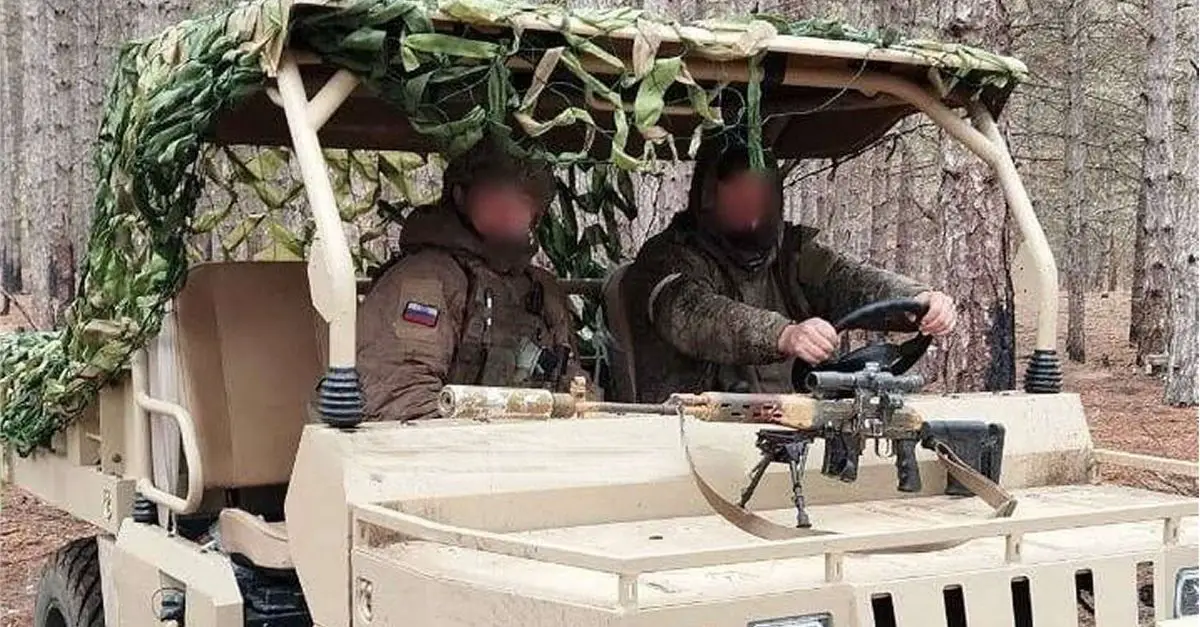Breaking news
British Army Intelligence Reports Surge in Russian Use of All-Terrain Light Vehicles in Ukraine Conflict.
According to information published by the British Army Intelligence Services on May 13, 2024, there has been a significant escalation in the use of light vehicles by Russian forces in the ongoing Ukraine conflict. The report outlines an increased deployment of all-terrain vehicles and off-road motorbikes for personnel transport and night raids on Ukrainian positions since the beginning of the year.
Follow Army Recognition on Google News at this link

The Chinese-made Desertcross 1000-3 is one of the most popular all-terrain vehicles used by Russian forces deployed in Ukraine. (Picture source Russian MoD)
The British army intelligence services suggest that these vehicles, including the Chinese-made Desertcross 1000-3 all-terrain vehicles from Odes Industries—personally inspected by Russian President Vladimir Putin in November 2023—are now a critical part of Russia's tactical approach. Over 2,100 of these vehicles have reportedly been purchased by Russia, indicating a strategic shift towards using mobile and flexible units.
According to a report by TASS on November 10, 2023, during his visit to the Russian Armed Forces in Rostov-on-Don, Russian President Vladimir Putin reviewed the newly acquired Desertcross 1000-3 all-terrain vehicles from China. During his inspection, it was disclosed that the Russian military currently has 537 of these vehicles in the basic configuration, with plans to receive an additional 1,590 units.
On July 3, 2023, the editorial team at Army Recognition reported that the Russian Ministry of Defense has formed specialized light units tasked with engaging enemy armored vehicles and tanks. These units utilize versatile all-terrain vehicles equipped with the AT-4 Spigot anti-tank guided missile system.
The all-terrain vehicles employed by these units boast significant tactical advantages, primarily due to their mobility. This allows for swift repositioning, strategic retreats, and effective pursuits, essential in modern warfare. The compact size and reduced footprint of these ATVs provide a stealth advantage, making them especially suitable for ambush tactics.
These specialized units are armed with the Soviet-designed AT-4 Spigot anti-tank guided missile system, which features the capability to adjust its trajectory mid-flight to target moving tanks effectively. The high penetration capability of the missile ensures it remains a formidable weapon against most main battle tanks.
Russian tactics appear to have adapted to utilize these light vehicles extensively for reconnaissance missions against Ukrainian defenses, potentially setting the stage for artillery strikes and drone attacks. The use of first-person view (FPV) and one-way attack (OWA) drones in conjunction with these reconnaissance missions suggests a concerted effort to degrade Ukrainian forces through continuous engagement.
However, the British intelligence report also highlights a significant trade-off in this strategy. By relying on lighter, more mobile vehicles, Russian forces have increased their vulnerability to counter-attacks. Ukrainian forces have successfully exploited this weakness, employing their FPV drones to target these lightly armored vehicles effectively.
The shift towards lighter vehicles marks a notable change in Russian military strategy, reflecting an adaptation to the evolving dynamics of the conflict but also exposing new vulnerabilities in their operational tactics.


























